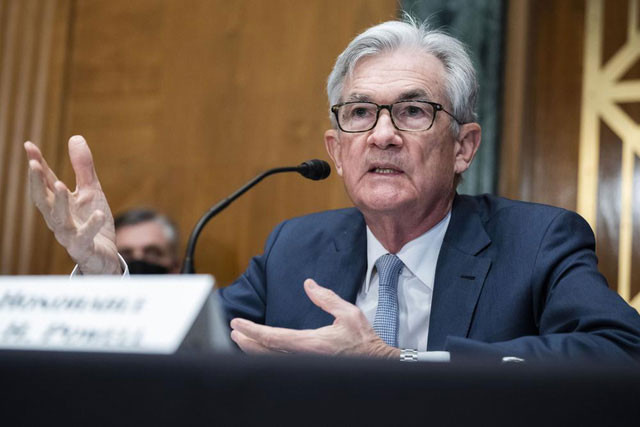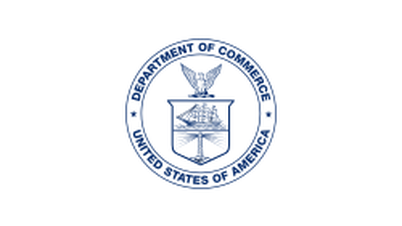At the end of a two-day meeting on the afternoon of September 18 (early morning of September 19, Vietnam time), the US Federal Reserve (Fed) decided to implement the first interest rate cut since March 2020.
Accordingly, the Fed cut interest rates by 50 basis points, from a 23-year high of 5.25-5.5%/year to 4.75-5%/year. At the same time, it signaled a further 200 basis point reduction by 2026. Previously, the Fed had raised interest rates 11 times from March 2022 to September 2023, from a record low of 0-0.25%/year to 5.25-5.5%/year.
So, the US has cut 50 basis points as expected by the market, in an effort to prevent a decline in the labor market. However, this is quite fast compared to what Fed Chairman Jerome Powell announced earlier. Specifically, in the July press conference, Chairman Powell said that a 50 basis point cut "is not something we are thinking about right now".
In recent months, the US labor market has shown less positive signs, the number of new jobs has not been as expected.
In terms of market signals, the dot-plot chart - showing members' interest rate forecasts - shows the Fed will cut another 50 basis points by the end of 2024, another 100 basis points in 2025 and 50 basis points in 2026.
After the meeting, the Federal Open Market Committee (FOMC) said it had increased confidence that inflation was “moving sustainably toward 2 percent,” and assessed the risks to achieving its employment and inflation goals as balanced.
The Fed also said that US job growth has slowed and the unemployment rate has increased but remains low. The Fed forecasts that unemployment will increase from 4% (June forecast) to 4.4% in 2024. Inflation is forecast at 2.3%. US economic growth is still quite good, forecast to reach 3% in the third quarter. US consumption remains high.

Gold prices fluctuate strongly, stocks fall
The Fed’s decision to cut interest rates by half a percentage point is expected to impact short-term bank borrowing costs, which in turn will have a ripple effect on consumer products such as mortgages, auto loans and credit cards. The Fed’s decision had an immediate impact on financial, currency and commodity markets. Gold prices soared to a new record high before falling shortly afterwards, while US stocks fell.
The DXY index (measuring the USD's fluctuations against a basket of six major currencies) fell to 100.5 points last night, then rose again to 101 points, before returning to 100.9 points early in the morning of September 19 (Vietnam time).
The volatility was small. The market had already priced in the bearish expectations for the dollar. The DXY index was at 103 in mid-August and 106.25 in late April.
Last night, spot gold prices hit a new all-time high of more than $2,595 an ounce, then cooled down and by early morning on September 19, were at $2,559 an ounce.
US stocks also fell slightly after hitting record highs recently. At the end of the trading session on September 18, the Dow Jones Industrial Average fell more than 100 points (-0.25%) to 41,503.1 points. During the session, the index increased by more than 375 points. The broad S&P 500 index fell nearly 0.3%.
Investors fear a US recession, even though Fed Chairman Jerome Powell said he sees nothing in the current economy that suggests the likelihood of a recession is increasing.
Thus, the decision to reduce interest rates has been made, and the direction is quite clear. Investors need time to further analyze policy signals and the direction of cash flow.
Gold is still expected to continue to increase because inflation may increase again, along with the fierce race for the White House in the US, and geopolitical tensions with no end in sight in many regions around the world.
US stocks are expected to remain stable as the US economy shows no clear signs of weakness.
The USD is still in a downtrend as the Fed enters a rate-cutting cycle. Most currencies in the world will experience less depreciation pressure. Money flows may reverse and return to developing economies, including Vietnam.

Source: https://vietnamnet.vn/fed-giam-lai-suat-manh-tay-gia-vang-lap-ky-luc-roi-lao-doc-chung-khoan-giam-2323673.html




![[Photo] Top players gather at the 2025 Nhan Dan Newspaper National Table Tennis Championship](https://vphoto.vietnam.vn/thumb/1200x675/vietnam/resource/IMAGE/2025/5/23/9ad5f6f4faf146b08335e5c446edb107)



































































































Comment (0)